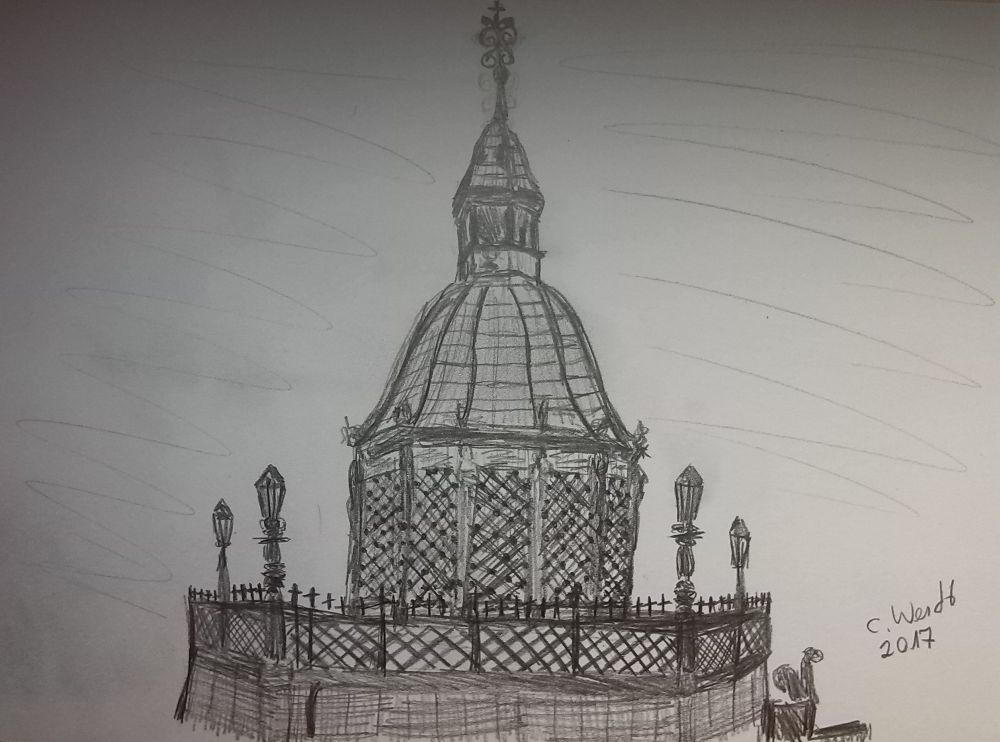Controversial Subject Water Art
– For the benefit or the ornament?
The question arises as to who has actually built Water Art.
Philipp Brandin presented the draft for water art, a „stener box“ in 1579.
He got 200 Taler deposit. The stone should be delivered from Gotland. As the art master feared that the stone will break apart. That’s why Brandin said he was ready to keep the water art.
There were disputes between the citizens and the city council. No money was made available for the completion of the building. Brandin threatened to demand compensation if he was no longer promoted.
In 1581 no stone was set. Negotiations on the development of the water art have been unsuccessful.
In 1590, Brandin resigned stones for advanced 200 talers.
The box should be lined inside with tombstones.
The cost was estimated 600 talers.
Disputes regarding the financing delayed the construction. ⅓ additional costs were estimated for the box, which would last for a maximum of 20 years.
The then mayor, Hinrich Schabbell, reckoned with 1000 talers, since the necessary stones were not there. The mayor ordered the stones at Gotland. These then lay unused on the ground and angered the citizens.
The municipality of Wismar gave another 100 talers. After another complaint of disgruntled citizens, the disbursement of the necessary sum was refused to end the construction. Nevertheless, thanks to the Council, construction was finally begun.
The population muttered and suspected that the water was only for decoration. It did not seem to be practical.
In 1594, the Committee on the Environment declared its agreement with the construction of water, the year in which Brandin died.
It is unclear who took over the construction work on the water art in 1595 and 1596.
In 1596 about 1000 stones were missing.
In 1600, the Council decided not to build the water art, since the missing stones could not be burnt in the required quality.
On the 11th of September, 1600, there was a note of a discussion between the Council and an unknown stone-cutter about how the building was going.
It can be seen from the city accounts on 19 December 1601, that it was the Lübeck master Heinrich Dammert.
„Heinrich Dammert, steinwirkern von Lubeck, auff rechnung zu verfertigung des arbeits, so an dem sterinen wasserkasten zu verfertigen. laut der quitung den 19. Decembris ao. etc. 1601.“ (Techen: Die Wismarsche Wasserkunst und Meister Heinrich Dammert. In: Mitteilungen des Vereins für Lübeckische Geschichte und Altertumskunde. S.63)
On the 11th of August, 1602, in a letter to the King of Denmark, the Council asked for the ban on the transfer of Gothic stones to Wismar. These would be needed for water art. He did so after a barge was forced to return without stones to Wismar.
In 1602 the construction of the water art was finished. Proof of this is the inscription on the water art of Wismar.
Go on with:Who built the Water Art?
Sources:
https://de.wikipedia.org/wiki/Wasserkunst_Wismar
Bernd Herrmann, Christine Dahlke (Hg.): Schauplätze der Umweltgeschichte Werkstattbericht, Graduiertenkolleg 1024 Interdisziplinäre Umweltgeschichte, Universitätsverlag Göttingen 2008, s.195-197.
Friedrich Techen: Die Wismarsche Wasserkunst und Meister Heinrich Dammert. In: Mitteilungen des Vereins für Lübeckische Geschichte und Altertumskunde. 1919, S. 60–67.
Das schöne Detail: Architekturdetails Wismars von der Gotik bis zum 20. Jh. Hg. Vom Rat der Stadt Wismar. Abteilung Kultur. Wismar, 1989. S.34-35.
Siegfried Berndt: Von Wismars Wasserkünsten. In: Wismarer Beiträge; Heft 8. Hanse Druck, Wismar, 1992, S. 5-11.
Originally posted 2017-07-13 10:27:12.

comments title